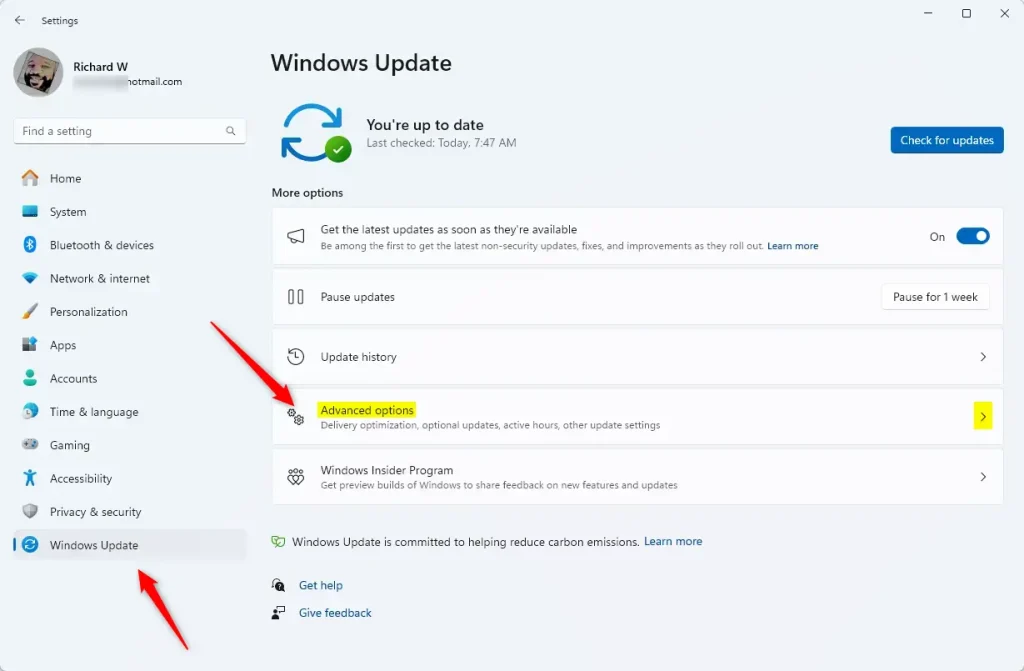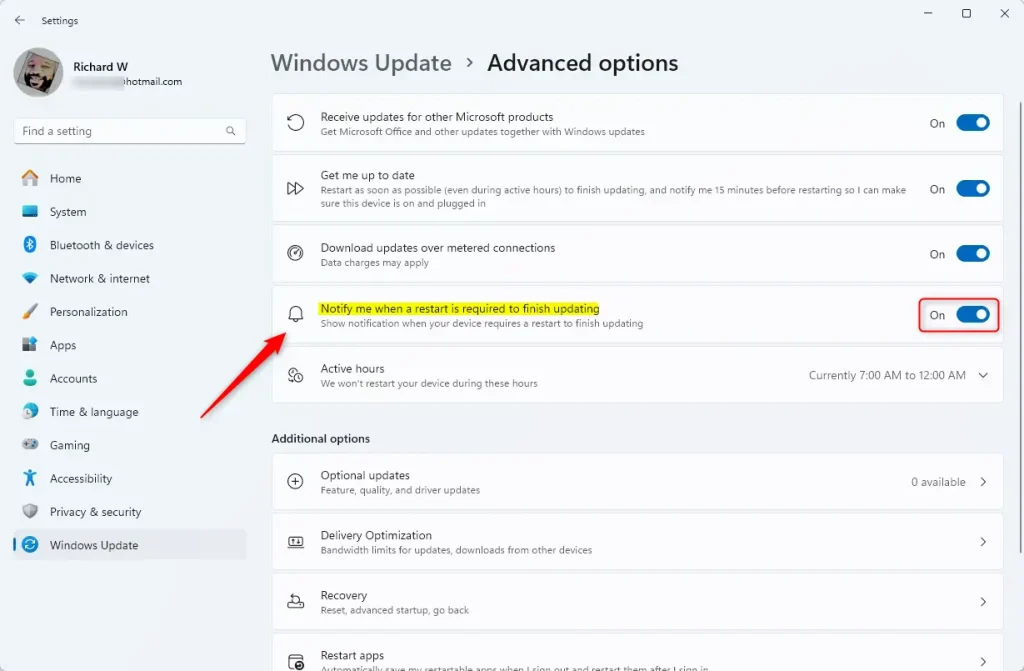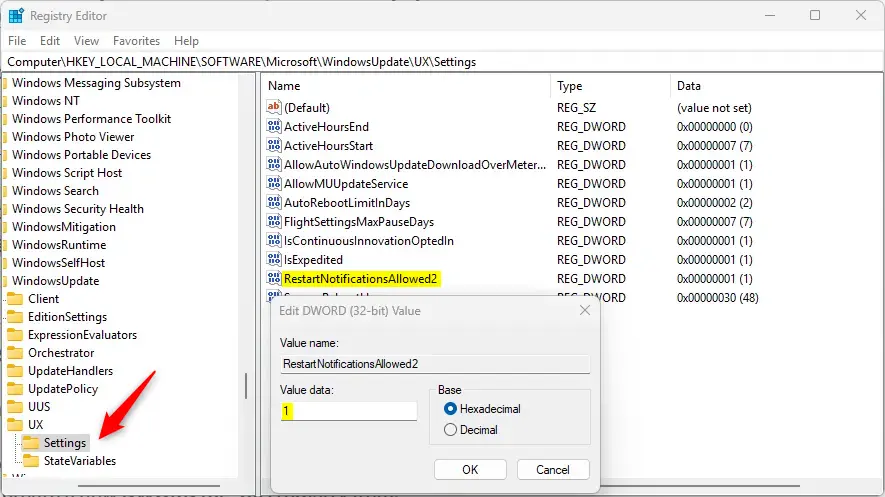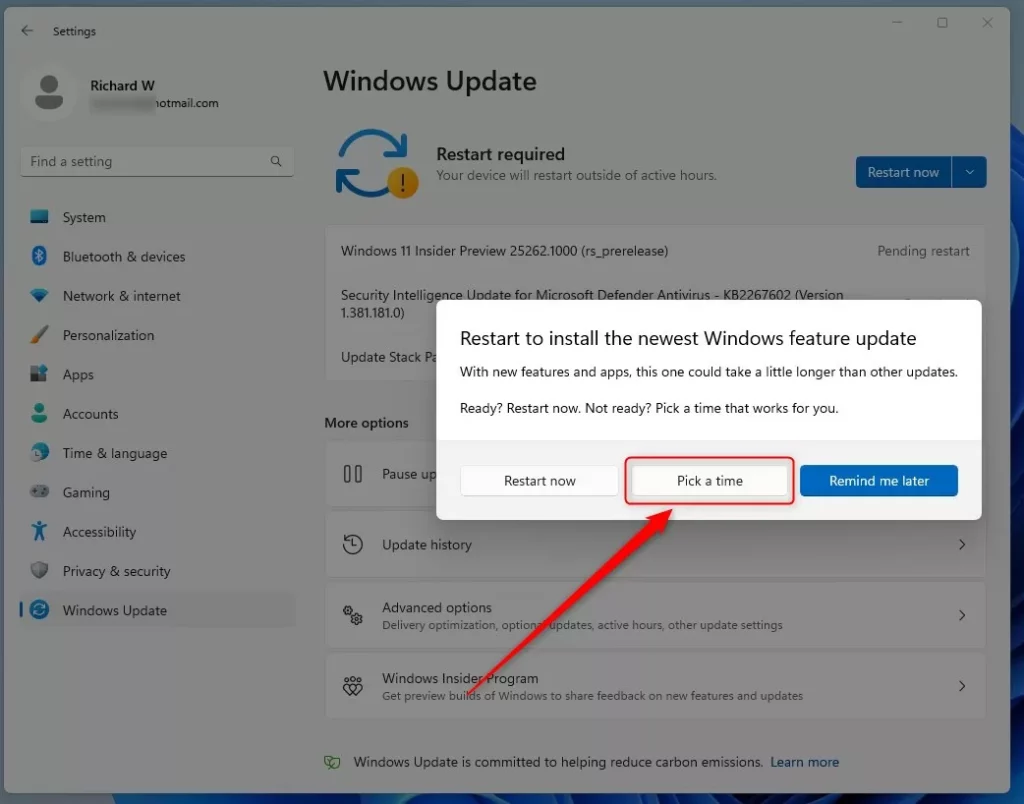This article explains how to turn Windows Update notifications on or off when your device requires a restart to finish updating in Windows 11.
When Windows installs an update, it sometimes requires a restart to complete the process. After the update is installed, Windows will notify the user to restart the device.
This notification is called the Windows Update, which requires restart notification. It is often displayed in a pop-up window or as a banner notification in the Action Center.
The notification’s purpose is to remind the user to restart their device so that the update can be appropriately applied.
The steps below show you how to enable or disable it in Windows 11.
Notify me when a restart is required to finish updating with Windows Update
As mentioned, you can turn on a feature in Windows Update that notifies you when a restart is required after updating.
Here’s how to do it.
First, open the Windows Settings app.
Then, select Windows Update on the left and the Advanced options tile on the right to expand it.

On the “Windows Update > Advanced options” settings pane, select the “Notify me when a restart is required to finish updating” tile. Then, toggle the button switch to the On position to enable it.
To disable it, toggle the switch button to the Off position.

Exit the Settings app when you’re done.
Turn on or off restart notifications after Windows Update using the Windows Registry Editor
Yet another way to disable the notifications after Windows updates is to use the Windows Registry editor.
First, open the Windows Registry and navigate to the folder key path below.
Disable or enable for current user:
Computer\HKEY_LOCAL_MACHINE\SOFTWARE\Microsoft\WindowsUpdate\UX\Settings
Next, double-click the RestartNotificationsAllowed2 (REG_DWORD) name on the System key’s right pane to open it.
Then, enter a value 1 to enable restart notifications after Windows updates.
Enter a value 0 to disable restart notifications after Windows updates.
If you do not see the “RestartNotificationsAllowed2” item, right-click a blank area and create a new DWORD (32-bit) registry item.
Then, enter the name “RestartNotificationsAllowed2” and enter a desired value to enable or disable it.

Warning: Editing the Registry can be risky and may cause irreversible damage to your installation if not done correctly. It’s recommended to back up your PC before proceeding.
Save your changes and restart your computer.

That should do it!
Conclusion:
- Enabling or disabling Windows Update restart notifications provides flexibility for users to manage their system updates effectively.
- The Windows Settings app allows for a user-friendly toggle of the restart notification feature.
- Advanced users can utilize the Windows Registry Editor to customize the restart notification behavior based on their preferences. However, caution is advised when editing the registry.
- Restarting the computer after making changes is crucial for the new settings to take effect.
- Following the steps outlined in this article, users can better control the Windows Update restart notification process to suit their needs.

Leave a Reply